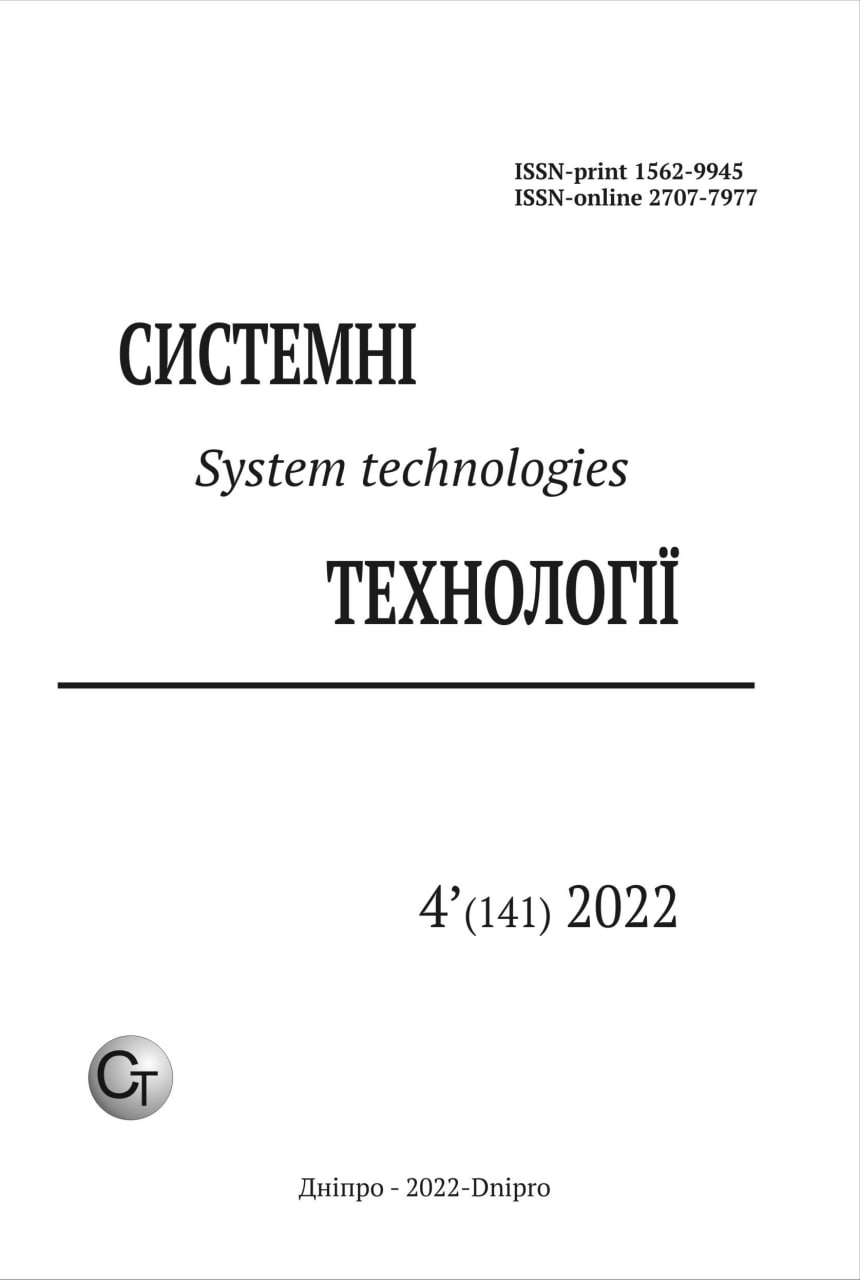Аналіз методик оцінки запасів вуглецю у лісах
DOI:
https://doi.org/10.34185/1562-9945-4-141-2022-05Ключові слова:
ліс, запас вуглецю, наземна біомаса, супутникові дані, GEDI, ICESat-2Анотація
Розглянуто сучасні підходи до оцінки запасів вуглецю у лісових екосистемах. Існує чотири базові підходи проведення регіональної оцінки запасів вуглецю в лі-сах: картографічний; конверсійний; дистанційний; модельний. Найбільш перспе-ктивним для практичного використання на великих територіях є дистанційний підхід, що поєднує наземні та супутникові вимірювання. На відміну від картог-рафічного підходу, супутникові дані використовуються для класифікації лісів та регресії запасів вуглецю у кожному пікселі досліджуваної області. Дистанційний підхід менш трудомісткий, ніж конверсійний, оскільки потребує менших обсягів наземних даних. Важливою особливістю дистанційного підходу є можливість створювати за його допомогою тимчасові ряди карт AGB. Описано набори даних, що містять оцінки біомаси та запасів вуглецю, які можна використовувати для навчання/валідації у машинному навчанні. Розгля-нуто та проаналізовано приклади застосування дистанційного підходу до оцінки біомаси лісу, визначено перспективні предиктори. Аналіз прикладів показав важ-ливість попереднього розбиття (у разі великої площі) області дослідження на від-повідні зони. Для оцінки запасів вуглецю лісів України найбільш перспективним є дистан-ційний підхід, що поєднує наземні та супутникові вимірювання для класифікації лісів та статистичного моделювання запасів вуглецю. Для навчання та валідації алгоритмів машинного навчання пропонується використовувати GEDI Biomass Map, що покриває більшу частину території України — від південних границь до широти Чернігова на півночі. Прототип продукту для оцінки біомаси лісів Украї-ни може спиратися на загальнодоступні дані MODIS NBAR, ЦМР SRTM, клімати-чні дані ECMWF та використовувати метод машинного навчання Random Forest.
Посилання
Good Practice Guidance for Land Use, Land-Use Change and Forestry / Edited by J. Penman et al. IPCC, 2003. URL: https://www.ipcc-nggip.iges.or.jp/public/gpglulucf/gpglulucf_files/GPG_LULUCF_FULL.pdf
Zamolodchikov D. Systems for estimating and forecasting carbon stocks in forest ecosystems // Sustainable Forestry. 2011. № 4 (29). С. 15-22.
URL: https://wwf.ru/upload/iblock/fb8/04-_17_.pdf
Gonçalves, A. C., Sousa, A., Malico, I. (Eds.). (2021). Forest Biomass — From Trees to Energy. IntechOpen. https://doi.org/10.5772/intechopen.90324 / Patrícia Lourenço. Biomass Estimation Using Satellite-Based Data, DOI: 10.5772/intechopen.93603. URL: https://www.intechopen.com/chapters/73176
Rodríguez-Veiga, P., Wheeler, J., Louis, V. et al. Quantifying Forest Biomass Car-bon Stocks From Space. Curr Forestry Rep 3, 1–18 (2017).
https://doi.org/10.1007/s40725-017-0052-5
Baccini, A., Goetz, S., Walker, W. et al. Estimated carbon dioxide emissions from tropical deforestation improved by carbon-density maps. Nature Clim Change 2, 182–185 (2012). https://doi.org/10.1038/nclimate1354
CEOS Above Ground Biomass. Above ground biomass products: NCEO Africa Bi-omass, IceSat-2 Boreal Biomass, JPL Global Biomass, GEDI Biomass, ESA CCI Bio-mass. URL: https://ceos.org/gst/biomass.html
How We Measure the Carbon Capture Potential of Forests _ Terraformation Blog. URL: https://www.terraformation.com/blog/how-to-measure-carbon-capture-potential-forests
Kolchugina, T.P. and Vinson, T.S. (1993). Carbon sources and sinks in forest bi-omes of the former Soviet Union. Global Biogeochemical Cycles 7: doi: 10.1029/93GB00571.
Kindermann G.E., McCallum I., Fritz S., Obersteiner M. (2008). A global forest growing stock, biomass and carbon map based on FAO statistics. Silva Fennica vol. 42 no. 3 article id 244. https://doi.org/10.14214/sf.244
Shvidenko, A.Z. & Schepaschenko, D.G. (2014). Carbon budget of Russian for-ests. Siberian Journal of Forest Science 1 69-92. URL: http://sibjforsci.com/upload/iblock/0fd/0fd7fb4421fd068bc0f1b9b578ad5d55.pdf
Korzukhin, M. D., & Korotkov, V. N. (2018). Modification of the ROBUL Model for Accounting the Carbon Balance of Russian Forests. Fundamental and Applied Climatology, 3, 30–53. https://doi.org/10.21513/2410-8758-2018-3-30-53
Baccini, A., Goetz, S., Walker, W. et al. Estimated carbon dioxide emissions from tropical deforestation improved by carbon-density maps. Nature Clim Change 2, 182–185 (2012). https://doi.org/10.1038/nclimate1354. Supplementary information: https://static-con-tent.springer.com/esm/art%3A10.1038%2Fnclimate1354/MediaObjects/41558_2012_BFnclimate1354_MOESM395_ESM.pdf
Saatchi, S. S., Harris, N. L., Brown, S., Lefsky, M., Mitchard, E. T. A., Salas, W., Zutta, B. R., Buermann, W., Lewis, S. L., Hagen, S., Petrova, S., White, L., Silman, M., & Morel, A. (2011). Benchmark map of forest carbon stocks in tropical regions across three continents. Proceedings of the National Academy of Sciences, 108(24), 9899–9904. https://doi.org/10.1073/pnas.1019576108
Bordoloi, R., Das, B., Tripathi, O. P., Sahoo, U. K., Nath, A. J., Deb, S., Das, D. J., Gupta, A., Devi, N. B., Charturvedi, S. S., Tiwari, B. K., Paul, A., & Tajo, L. (2022). Satellite based integrated approaches to modelling spatial carbon stock and carbon sequestration potential of different land uses of Northeast India. Environmental and Sustainability Indicators, 13, 100166. https://doi.org/10.1016/j.indic.2021.100166
Asner, G. P. et al. Targeted carbon conservation at national scales with high-resolution monitoring. Proceedings of the National Academy of Sciences 111, E5016–E5022 (2014). https://doi.org/10.1073%2Fpnas.1419550111
Ghanbari Motlagh M., Babaie Kafaky S., Mataji A., Akhavan R. (2019): Calcula-tion of the aboveground carbon stocks with satellite data and statistical models inte-grated into the climatic parameters in the Alborz Mountain forests (Northern Iran). J. For. Sci., 65: 493-503. https://doi.org/10.17221/107/2019-JFS
Luo, M., Wang, Y., Xie, Y., Zhou, L., Qiao, J., Qiu, S., & Sun, Y. (2021). Combi-nation of Feature Selection and CatBoost for Prediction: The First Application to the Estimation of Aboveground Biomass. Forests, 12(2), 216. https://doi.org/10.3390/f12020216
L. Yang, S. Liang and Y. Zhang, "A New Method for Generating a Global Forest Aboveground Biomass Map From Multiple High-Level Satellite Products and Ancil-lary Information," in IEEE Journal of Selected Topics in Applied Earth Observations and Remote Sensing, vol. 13, pp. 2587-2597, 2020,
doi: 10.1109/JSTARS.2020.2987951
Santoro, M., Beer, C., Cartus, O., Schmullius, C., Shvidenko, A., McCallum, I., Wegmueller, U., & Wiesmann, A. (2010). The BIOMASAR algorithm: An approach for retrieval of forest growing stock volume using stacks of multi-temporal SAR data. In: Proceedings of ESA Living Planet Symposium, 28 June-2 July 2010.
URL: https://biomasar.org/fileadmin/biomasar/papers/santoro_biomasar_LPSympo_2010.pdf
Khati U, Lavalle M and Singh G (2021) The Role of Time-Series L-Band SAR and GEDI in Mapping Sub-Tropical Above-Ground Biomass. Front. Earth Sci. 9:752254. doi: 10.3389/feart.2021.752254
Ehlers, D.; Wang, C.; Coulston, J.; Zhang, Y.; Pavelsky, T.; Frankenberg, E.; Woodcock, C.; Song, C. Mapping Forest Aboveground Biomass Using Multisource Remotely Sensed Data. Remote Sens. 2022, 14, 1115.
Опубліковано
Номер
Розділ
Ліцензія

Ця робота ліцензується відповідно до ліцензії Creative Commons Attribution 4.0 International License.















